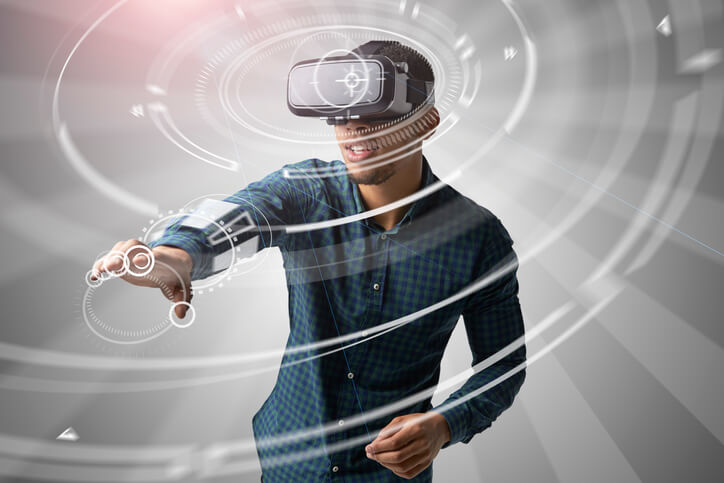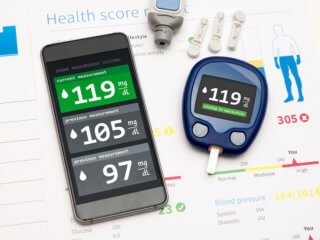Digitalization is entering into every field today. So, there’s nothing to wonder about going into the medical field. From surgical robots to “smart hospitals,” the digital transformation is revolutionizing patient care in new and exciting ways. National health expenditures in the US accounted for $3.2 Trillion in 2015, nearly 18% of the country’s total GDP. It predicts that the digital revolution can save $300 Billion in spending in the sector, especially in the area of chronic diseases. Medical cost growth rates have decreased in the past ten years, sinking from an 11.9% growth rate from 2007 to today’s 6.5%. Preventative care and better at-home care for patients have been boosted by technology, empowering individuals to get help when they are in need and to take more control of their health and to maintain them well-being at home on their own. Here are ten digital health technologies that are helping patients stay healthier in their everyday lives.
- Telemedicine
Telemedicine offers patients as well as health care providers, both a new spring of freedom and accessibility. But for the first time, a patient’s care options are not limited by geographic location. Even patients in remote areas can receive the highest quality of care, providing they have an Internet connection and smartphone. This device can also save both time and money. Patients no longer have to schedule their days around routine follow-up visits. Instead, they can make a conference call to get the prescription update or check-up they need. Even back in 2015, 80% of doctor’s surveyed said telemedicine is a better way to manage chronic diseases than the traditional office visit. By 2021, Research and Markets firm predict that telemedicine industry will worth $40.9 billion, growing at a compound growth rate of 14.77 percent annually from $17.9 billion in 2015.Recommended for you 4 Digital health technologies for preventive health care 7 key market segments of digital health India 256 innovative digital health starups in Israel - Wearables
These devices just look like a wrist watch and help us to manage our well-being without setting foot in a doctor’s office. Now, mobile devices as small as our cell phone can perform ECGs, DIY blood tests, or serve as a thermometer. Now, with help from automation, patients can even be advised to check their pulse, oxygen levels, or weight and enter results into mobile patient portals. They can even transmit data to our doctor in real time. Those details can help predict one’s risk for heart disease or other illnesses, ultimately saving lives. This thing is far more than cool. It’s life-saving. 2015 was the year of wearable health devices. A large group of devices became available, Amazon launched its Wearable Marketplace, and millions of activity trackers were sold. Market research firm Kalorama Information reported in The Global Market for Medical Devices that wearables-related to healthcare is one among the top 10 healthcare trends this year. - Food scanners
It is a doctor-developed product that scans food at the molecular level to deliver caloric data and ensure food safety. These are the devices which could enable anyone to find out what’s lying on their plates, providing clear benefits not only to people looking to gain weight or eat healthier food but also to people with severe allergies as well. Food scanners like Scio and Tellspec have been in the public attention since 2014, but as early developer prototypes have already been sent to their first users in 2015. - Social mediaHospitals and doctor’s offices are no longer shying away from social media and online communication. Instead, they are using online networks as a way to build patient trust and offer resources for preventative knowledge and advice. Access to better care at home will help patients make smarter decisions regarding their health care and perform better health maintenance cheaply. As more health care institutions embrace technology, from how their employee’s make conversation with patients to the type of health management they require, the benefits of at-home health technology can also result in better capability for health providers and increased loyalty. Health care focused marketing firm Health care Success reports one of the most notable marketing trends in 2017 is by using social messaging apps as one of the most powerful marketing pathways, while health care institutions can proactively use social media to stand away from competitors in a hyper-selective health care market. This firm also predicts more health care providers will use digital marketing and social to form a one-on-one connection with patients, developing relationships online in addition to in-person.
- AI and Big dataWe are already in the age of Big data which is king in the digital world, and health care is no exception. But more importantly, it can be employed for identifying risk factors and recommend preventative treatment automatically. Even more exciting, with the rise of these Internet of (Medical) Things, wearable and mobile devices are frequently connected, working together to create a joined medical report available anywhere by your health care provider. This data is not just beneficial for the patient. It can be combined and studied and also used to predict health care trends for entire cultures and countries. AI will continue to be accepted by health care professionals as a clinical decision support tool to mitigate inaccuracies, recognize patterns and improve disease diagnosis and treatment.
- Self diagnostics
Diagnostics is very important to unmask the disease risk factors and all. Digital health technologies have made this to be a patient-friendly that it saves the time & money and in fact, it can also be portable. Samsung LABGEO products and portable genome sequencers like Oxford Nanopore’s MinION are some of them. - InteroperabilityThe health care industry is increasingly concerned with increasing costs, staff shortages, increased the burden of chronic disease, tightening of regulatory requirements, improving efficiency and rising patient expectations. Health information combination and dealing through eHealth that provides a 360-degree view of medical data and possibilities of telehealth are essential in addressing current challenges. This one makes interoperability the most impactful health care ICT aspect in 2017. Raising eHealth involves integrating disparate systems and stakeholders involved in private and public health care delivery and adopting standard message formats and standards. Admittance to patient records can also be extended via a secure Internet connection to authorized external parties, including hospitals, social services agencies, primary care providers, insurance providers, pharmacies and independent consultants.
- Humanoid robots
Boston Dynamics, taken by Google in 2013 is one of the most promising companies developing robots. Since then, they only released teaser videos regarding the animal-like robots and Pet man, the humanoid robot. Various technologies they are working on seem to be at a stage where they are ready to become actual products, may be the first signs of which we’ll see in this year. - Voice recognition technologiesThese are the devices which play the significant role in the health of the people who suffer from mental illnesses. The devices are powered with AI and are connected to the Internet to provide correct suggestions in reply to the people. Almost 6 percent of the Americans are losing their lives due to mental illnesses every year. So, this way of digitalization is essential for us. Amazon’s Echo products with Alexa as its digital assistant belong to this group.
- Mobile appsHave you ever operated phone tag with your doctor while resting for outstanding test results? It’s so nerve-racking, right! That is why mobility and cloud access have been such a great help in increasing openness for patients and doctors alike. By 2018, it’s estimated that 65% of communications with health care facilities will occur by mobile devices. Some 80% of physicians already use smartphones and medical apps, with 72% accessing drug info on smartphones on a regular basis. The days of file rooms and paper charts are gone. Hospitals, doctor’s offices, and insurance companies are now saving patient medical records in the cloud, with patients able to obtain test results online 24/7. Given HIPAA laws relating to patient privacy, it’s apparently no surprise this has also led to an improved focus on security and data protection. According to one report, “the black-market value of medical data is greater than even that of financial information.” Beyond things that help a patient take care of their health through a particular action, accessories such as health care apps like WebMD and Fitbits allow patients to be more proactive about staying healthy through better fitness and diet, as well as recognizing potential symptoms to treat them earlier. Apple research kit, Health Tap, Hello MD, Microsoft Health Vault, Pill Pack, Ping MD, Vida Health Coach, Doctor on Demand are some examples.
Creating and developing a better health care system anywhere in the world is a huge undertaking requiring years, large amounts of money, and significant human resources to complete (and then maintain). However, the initial attempts at health care reform in the United States should serve as a cautionary tale to health leaders in Asia, the Middle East, Europe and Latin America. Knowingly or unknowingly, digitalization in health care reform is spreading across the globe.
Image credit: www.istockphoto.com

















